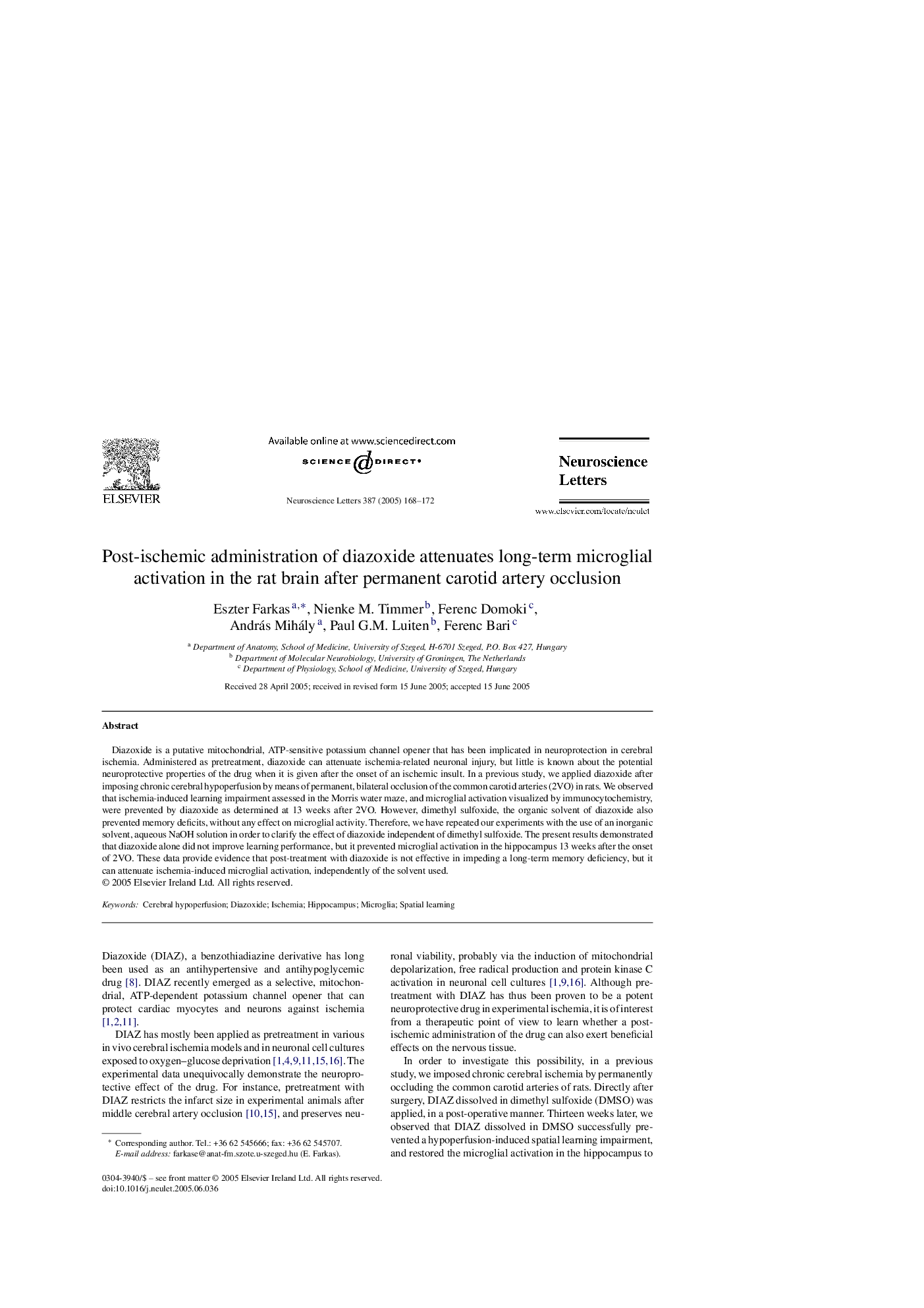| کد مقاله | کد نشریه | سال انتشار | مقاله انگلیسی | نسخه تمام متن |
|---|---|---|---|---|
| 9428993 | 1297023 | 2005 | 5 صفحه PDF | دانلود رایگان |
عنوان انگلیسی مقاله ISI
Post-ischemic administration of diazoxide attenuates long-term microglial activation in the rat brain after permanent carotid artery occlusion
دانلود مقاله + سفارش ترجمه
دانلود مقاله ISI انگلیسی
رایگان برای ایرانیان
کلمات کلیدی
موضوعات مرتبط
علوم زیستی و بیوفناوری
علم عصب شناسی
علوم اعصاب (عمومی)
پیش نمایش صفحه اول مقاله

چکیده انگلیسی
Diazoxide is a putative mitochondrial, ATP-sensitive potassium channel opener that has been implicated in neuroprotection in cerebral ischemia. Administered as pretreatment, diazoxide can attenuate ischemia-related neuronal injury, but little is known about the potential neuroprotective properties of the drug when it is given after the onset of an ischemic insult. In a previous study, we applied diazoxide after imposing chronic cerebral hypoperfusion by means of permanent, bilateral occlusion of the common carotid arteries (2VO) in rats. We observed that ischemia-induced learning impairment assessed in the Morris water maze, and microglial activation visualized by immunocytochemistry, were prevented by diazoxide as determined at 13 weeks after 2VO. However, dimethyl sulfoxide, the organic solvent of diazoxide also prevented memory deficits, without any effect on microglial activity. Therefore, we have repeated our experiments with the use of an inorganic solvent, aqueous NaOH solution in order to clarify the effect of diazoxide independent of dimethyl sulfoxide. The present results demonstrated that diazoxide alone did not improve learning performance, but it prevented microglial activation in the hippocampus 13 weeks after the onset of 2VO. These data provide evidence that post-treatment with diazoxide is not effective in impeding a long-term memory deficiency, but it can attenuate ischemia-induced microglial activation, independently of the solvent used.
ناشر
Database: Elsevier - ScienceDirect (ساینس دایرکت)
Journal: Neuroscience Letters - Volume 387, Issue 3, 28 October 2005, Pages 168-172
Journal: Neuroscience Letters - Volume 387, Issue 3, 28 October 2005, Pages 168-172
نویسندگان
Eszter Farkas, Nienke M. Timmer, Ferenc Domoki, András Mihály, Paul G.M. Luiten, Ferenc Bari,